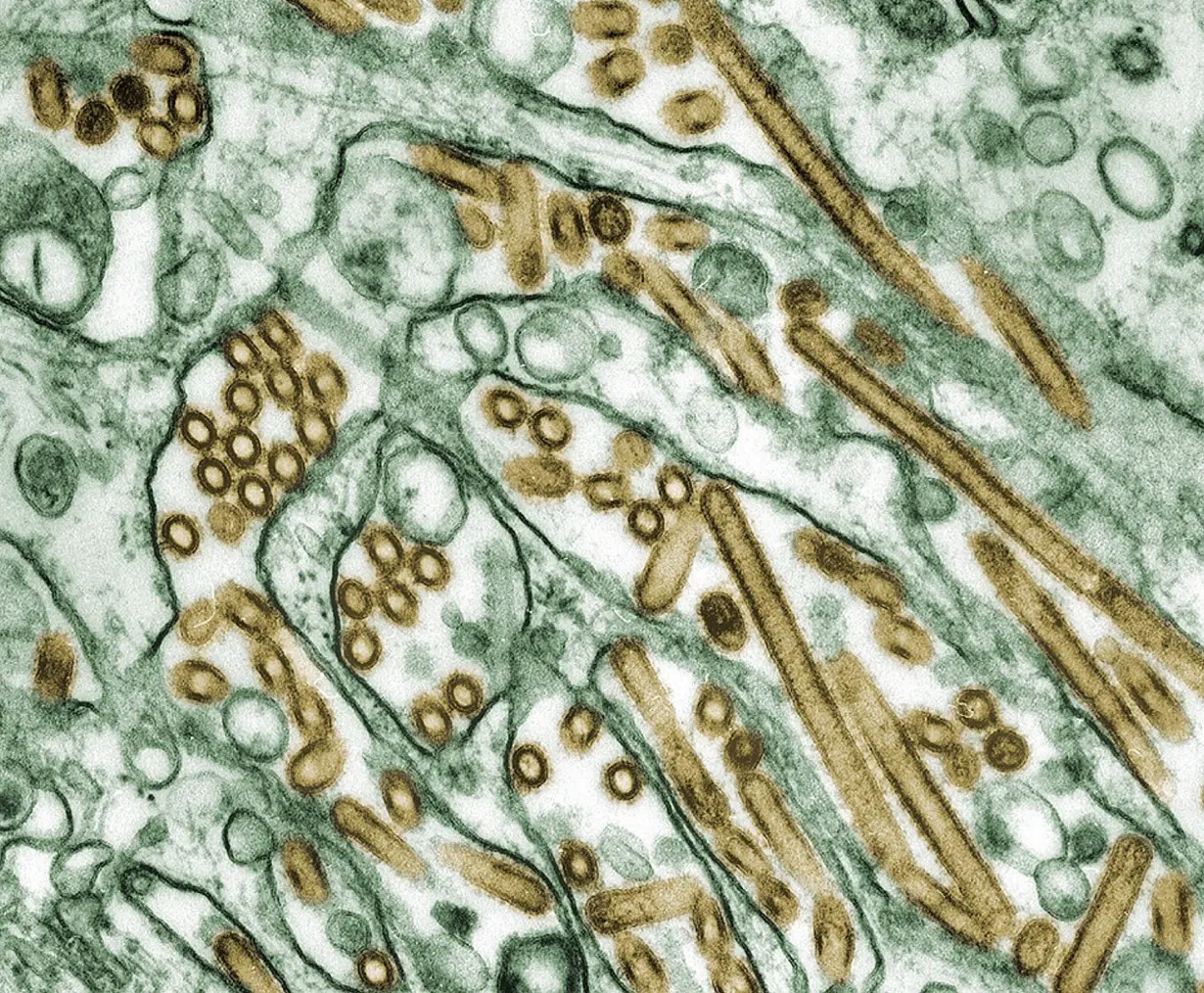(CNN) — A patient in Missouri who was hospitalized after an infection with bird flu had the H5N1 strain of the virus, the US Centers for Disease Control and Prevention confirmed Friday.
The viral sequence was uploaded Friday to the GISAID database, which makes genetic sequences of viruses publicly available for research and study. It shows that the virus is closely related to the strain that has been infecting dairy cattle in 14 states this year.
How the person caught the virus is still under investigation. Thirteen other human infections have been reported in the US this year, all in people who had close contact with infected animals.
The person who tested positive in Missouri late last month, however, had no contact with wild birds, poultry, cats, or cattle, and they reported no consumption of raw dairy products. The same was also true for their close contacts, according to Lisa Cox, communications director for the Missouri Department of Health and Senior Services. In an email, Cox said the patient didn’t have any pets. She said she was unsure if the person had consumed pasteurized dairy products. Cox said blood tests to look for antibodies to their virus in the patient and their close contacts are being considered.
The significance of this infection is an open question. On one hand, experts say it’s concerning that the person was infected without any apparent contact with infected animals, which seems to deviate from the pattern. All the other human infections of H5N1 reported this year have been mild and what infectious disease experts call dead-end infections: There’s been no evidence that any of the people spread the infection to others. It is reassuring, however, that monitoring of the person’s close contacts has not found any confirmed onward transmission, suggesting that this was not a virus with any new abilities.
That observation seems to be supported by the genetic sequence of the virus. Scientists said they didn’t see any changes that would indicate it might be more easily spread or cause more severe disease, according to the CDC.
The virus did, however, have mutations that could affect the development of candidate vaccine viruses, flu viruses prepared by the CDC that manufacturers can use to create vaccines in the event of a disease outbreak.
Further information posted about the Missouri case Friday in the CDC’s weekly FluView report revealed that a close household contact of the infected person got sick the same day, had similar symptoms but was never tested. Both people have since recovered.
The simultaneous development of symptoms does not support person-to-person spread but suggests a common exposure, according to the CDC.
A second close contact, a health-care worker, developed mild symptoms but tested negative for flu.
A 10-day follow-up period has passed, and no additional cases have been found, the CDC reported.
The confirmed patient in Missouri was an adult who had multiple underlying medical conditions. They became ill the week ending August 24, according to the FluView report.
Dr. Nirav Shah, principal deputy director of the CDC, said at a news briefing Thursday that the patient went to the hospital with chest pain, nausea, vomiting, diarrhea and weakness. Shah said the person was hospitalized because of their underlying conditions.
While in the hospital, the patient tested positive for an influenza A virus. The state of Missouri is routinely conducting additional testing on all specimens that test positive for influenza A, and this testing determined that the person had an H5 virus, which is unusual. The sample was forwarded to the CDC for confirmation.
Asked Thursday whether the CDC considered the flu infection to be incidental to the patient’s hospitalization — in other words, something that had not necessarily played a role in the reason they needed to be in the hospital but was spotted while there — Shah said, “no, we’re not describing it as incidental. That was a question that was on our minds. But no, it was not incidental there.”
Shah declined to offer more information about the case, saying it could compromise the patient’s confidentiality.
CDC scientists said the patient sample they received contained a low concentration of the virus, and they cautioned that they may not be able to sequence all eight of the virus’ segments.
The-CNN-Wire
™ & © 2024 Cable News Network, Inc., a Warner Bros. Discovery Company. All rights reserved.

 TikTok seeks to reassure U.S. employees ahead of Jan. 19 ban deadline
TikTok seeks to reassure U.S. employees ahead of Jan. 19 ban deadline
 US won't seek charges in unarmed Black motorist Ronald Greene's fatal 2019 arrest
US won't seek charges in unarmed Black motorist Ronald Greene's fatal 2019 arrest
 Euro zone households could increase consumption, ECB chief economist says
Euro zone households could increase consumption, ECB chief economist says
 Foreigners sold South Korean equities last month by most since early 2020
Foreigners sold South Korean equities last month by most since early 2020
 Trump and Biden national and homeland security staff will meet Wednesday for threat exercises
Trump and Biden national and homeland security staff will meet Wednesday for threat exercises
 As fires ravage Los Angeles, Tiger Woods isn't sure what will happen with Riviera tournament
As fires ravage Los Angeles, Tiger Woods isn't sure what will happen with Riviera tournament
 Antetokounmpo gets 50th career triple-double as Bucks win 130-115 to end Kings' 7-game win streak
Antetokounmpo gets 50th career triple-double as Bucks win 130-115 to end Kings' 7-game win streak
 No 97 Laura Siegemund upsets Olympic champion Zheng Qinwen at the Australian Open
No 97 Laura Siegemund upsets Olympic champion Zheng Qinwen at the Australian Open








